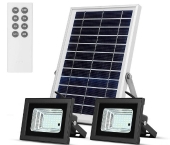


John C Daley wrote:Interesting stuff, thanks

John Duffy wrote:I'm so confused at this point, I don't know if my flux capacitor will ever work. (much less, my turbo-encabulator) Guess I'll stick with wood working and composting

John F Dean wrote:What measures can I take to assure my batteries do not draw down too far? I have had solar for years as a backup for years. I am now planning on using it as my primary source of electricity, so I need to get smarter real fast.
there is a limit on the number of lead acid battery strings that can be wired in parallel. Three parallel strings of batteries is the recommended maximum. One or two is more ideal: they will charge and discharge more evenly, which makes them last longer.


James MacKenzie wrote:that isn't a very big lake for all those engines - that must grind your gears something fierce..
go with the small greenhouse for now - if you build a lean-to you can always grow more shade tolerant food = broccoli, rappini etc... mine always bolt - i am trying to find a place with LESS sun (and slugs
also you can start tomatoes and peppers then move them when the oaks get leaves..
anyway - best of luck - final thought is to buy "container" varieties of veggies..
cheers!

James MacKenzie wrote:oh man - that changes everything and totally sucks... try the portable one then and see how it goes..
how big is the lake??
